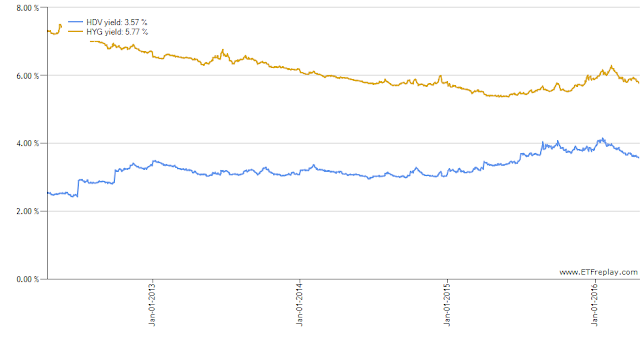I have written many times about the perils of "go anywhere (also known as unconstrained) bond funds. As is (or should be) clear from the label the funds can invest in assets well beyond those that would make up the stable assets that most investors seek in the bond allcation of their portfolio. Rather than investing in an asset class the investor is really betting on the future success of the "star manager".
The prime example of this was the Pimco Total Return bond fund managed by "bond king" Bill Gross. While Pimco marketed the fund as a "core holding" for investors it was in fact far closer to a risky hedge fund than the time of fund that would be a good choice for a core bond holding.. After many years of strong performance and investment chasing investors which made it one of the largest mutual funds in the world, the fund began to turn in sub par performance and the assets came rushing out. Gross was ousted in a much publicized controversial episode still the subject of a lawsuit with over $100 million in dispute.
Gross has moved to Janus Capital where he manages the Janus Unconstrained bond fund. But to say he has moved on would hardly be correct. As described in this NYT article Gross is nothing short of obsessed at his new funds perfrmance vs. Pimco Total Return...and he measures that performance on a daily basis:
Mr. Gross, 71, is not tethered to his phone, so when Bloomberg publishes the daily result of his fund at 3 p.m. California time, he will drop his golf clubs and rush to the office to get the news.
The first thing he says he does when arriving home (after kissing his wife, Sue, of course): Check the Bloomberg. At night he will wake up as many as three times to check on global markets, he says....“My whole evening is dependent on whether I beat them,” Mr. Gross said. “You see, I have to prove it all over again. Every day.”
In his obsessive quest for short term performance Mr. Gross is prepared to take some huge bets on what are far from conventional assets a long term investor might seek as parts of his bond allocation:
Mr. Gross has made some big bets that Brazil and Mexico will not default by selling investors credit-default swaps, derivative instruments that would force him to disburse large sums if these countries go belly up.
Such derivative-fueled bets on financial stability can backfire when markets go haywire. Last year, his Janus fund experienced several sharp drops in price, which preceded Mr. Soros’s decision to withdraw his funds.
“This is not a riskless strategy,” Mr. Gross acknowledged.
He is also under no illusion that his good run is permanent.
So he is enjoying its fruits while they last. And if he has become fanatical about beating the guys across the street, so what? He is convinced that fealty to the screen, not to mention daily yoga stretches, is what keeps him feeling youthful.
Latin American credit default swaps (yes credit swaps the intrument so well explained by Selena Gomez and Prof Richard Thaler in the movie the Big Short)
Gross, never one to hide from the media spotlight appeared recently on CNBC to tout two other holdings in his unconstrained bond fund: the stock of brewer SAB Miller s and a preferred stock ETF !
Latin American credit default swaps (yes credit swaps the intrument so well explained by Selena Gomez and Prof Richard Thaler in the movie the Big Short)
Gross, never one to hide from the media spotlight appeared recently on CNBC to tout two other holdings in his unconstrained bond fund: the stock of brewer SAB Miller s and a preferred stock ETF !
At present around half of the $1.3 billion in the fund are Gross' own assets. But I have little doubt a period of strong short term perfrmance will attract more assets...into an extremely high risk portfolio,...certainly not the kind f stable instrument that should make up the bond allocation for a long term investor.
The Janus fund may be seem an extreme example but the new hot "unconstrained bond fund" run by the recently crowned bond king Jeffrey Gundlach: The Doubleline Total Return Bond Fund takes some large concentrated riks as well. Gundlach does not have large holdings in emerging market credit swaps but it has far from a conventional bond fund. The top holdings are in agency mortgage back securites (48% of the portfolio vs 15% for the intermediate bond category) and 17% in non agency mortage backed securities (1.3% average for the category) . As viewers of :"The Big Short" movie and other market observers doubtless know such securities were at ground zero of the 2008 financial crisis.
The big bets of Gross and Gundlach may well produce spectacular short term returns or major losses even when the overall bond market experiences little fluctuation.. Is this the way you want your long term money invested..especially as part f your bond allocation?






